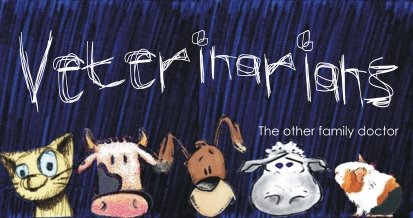
The very word "euthanasia" is derived from the Greek terms "eu" meaning good and "thanatos" which means death. A “good death” would be one that occurs with minimal pain and distress.
Veterinary euthanasia is the act of inducing humane death upon an animal. It is our responsibility as veterinarians to ensure that if an animal’s life is inevitably to be taken, it is done with the highest degree of respect, with an emphasis on making the death as painless and distress-free as possible.
When I was a vet student, we had a whole chapter during our clinical years to learn up on the topic. We were taught that euthanasia techniques should result in rapid loss of consciousness followed by cardiac or respiratory arrest and the ultimate loss of brain function. In addition, the technique should minimize distress and anxiety experienced by the animal prior to loss of consciousness. There is nothing worse than having to witness an incompetent veterinarian failing to execute a professional euthanasia technique and instead bringing even more suffering upon an already dying animal.
Not only do we need to be competent in our professional judgment in making the decision, the special considerations that need to be taken on a case-to-case basis and the administration or technique of euthanasia itself, but we also had to learn how to handle owner grief upon loss of their pet. For many small animal practitioners, this remains a very delicate and challenging subject matter indeed - something the textbooks don't always teach you.
We usually allow the owners to spend the last few moments with their pets alone before euthanasia is carried out.
Many pet owners have asked if they could help to hold their pet and sometimes even have the pet in their arms at the time of euthanasia. As a veterinarian, we would usually try our very best to accommodate their wishes, just as long as the owner does not obstruct or interfere with the actual procedure itself. We often have to gently remind our clients that it is imperative that the solution be injected swiftly within the vein for the procedure to unfold in a quick and proper manner.
On the other side of the scale, there are a few pet owners who are more comfortable not having to observe their pet's final moments, and would rather be in the waiting room throughout the entire procedure. These type of owners usually choose to be with their pet in private for a few moments after it has passed away. As a vet, we have to deal with different types of owners with varying requests - but all with the same amount of respect.
Once the procedure is completed, it is at this point when vets have to show great empathy and support for the pet owner. Every vet with a passion for animals would recognise and understand that this is most important and very much needed in order to help the grieving owner through one of the saddest points of life - the recent loss of a faithful companion and friend.
Veterinary euthanasia is the act of inducing humane death upon an animal. It is our responsibility as veterinarians to ensure that if an animal’s life is inevitably to be taken, it is done with the highest degree of respect, with an emphasis on making the death as painless and distress-free as possible.
When I was a vet student, we had a whole chapter during our clinical years to learn up on the topic. We were taught that euthanasia techniques should result in rapid loss of consciousness followed by cardiac or respiratory arrest and the ultimate loss of brain function. In addition, the technique should minimize distress and anxiety experienced by the animal prior to loss of consciousness. There is nothing worse than having to witness an incompetent veterinarian failing to execute a professional euthanasia technique and instead bringing even more suffering upon an already dying animal.
Not only do we need to be competent in our professional judgment in making the decision, the special considerations that need to be taken on a case-to-case basis and the administration or technique of euthanasia itself, but we also had to learn how to handle owner grief upon loss of their pet. For many small animal practitioners, this remains a very delicate and challenging subject matter indeed - something the textbooks don't always teach you.
We usually allow the owners to spend the last few moments with their pets alone before euthanasia is carried out.
Many pet owners have asked if they could help to hold their pet and sometimes even have the pet in their arms at the time of euthanasia. As a veterinarian, we would usually try our very best to accommodate their wishes, just as long as the owner does not obstruct or interfere with the actual procedure itself. We often have to gently remind our clients that it is imperative that the solution be injected swiftly within the vein for the procedure to unfold in a quick and proper manner.
On the other side of the scale, there are a few pet owners who are more comfortable not having to observe their pet's final moments, and would rather be in the waiting room throughout the entire procedure. These type of owners usually choose to be with their pet in private for a few moments after it has passed away. As a vet, we have to deal with different types of owners with varying requests - but all with the same amount of respect.
Once the procedure is completed, it is at this point when vets have to show great empathy and support for the pet owner. Every vet with a passion for animals would recognise and understand that this is most important and very much needed in order to help the grieving owner through one of the saddest points of life - the recent loss of a faithful companion and friend.


